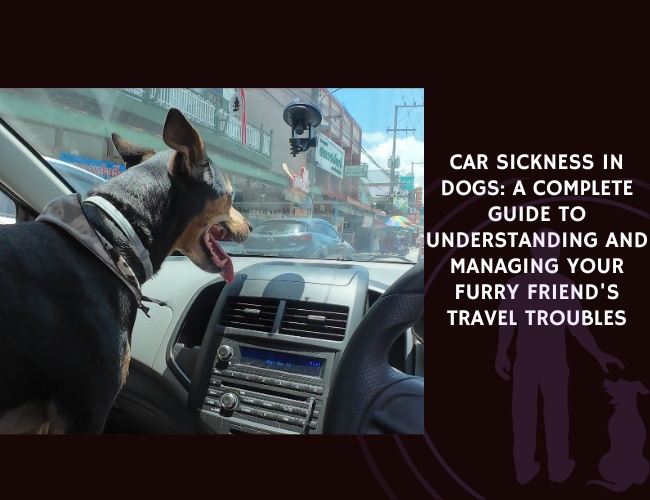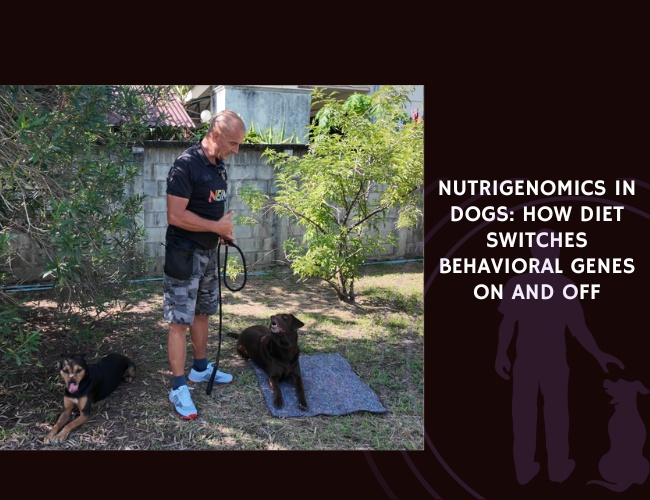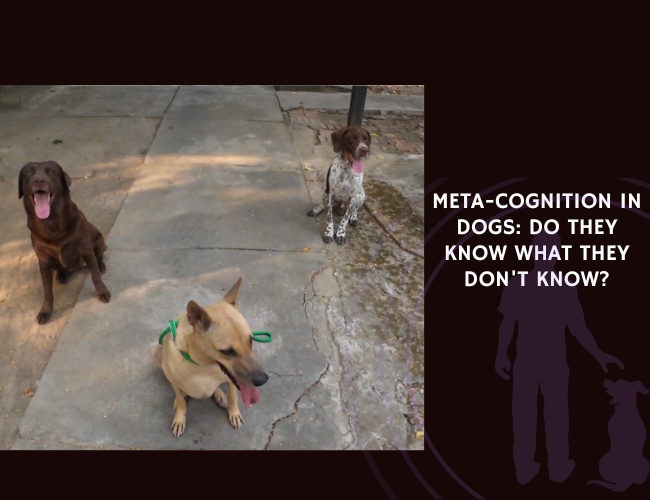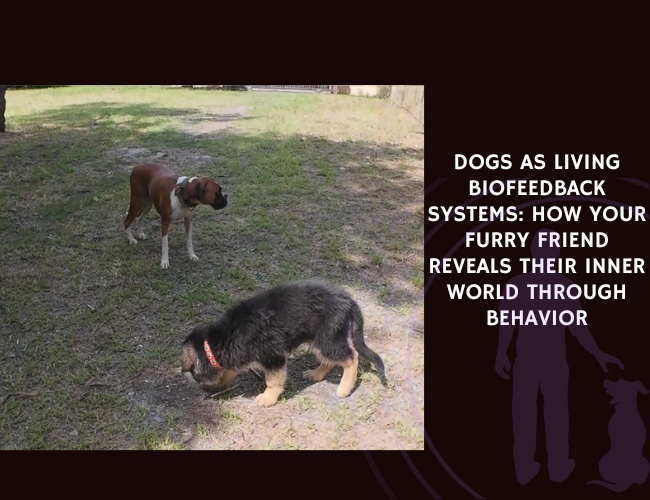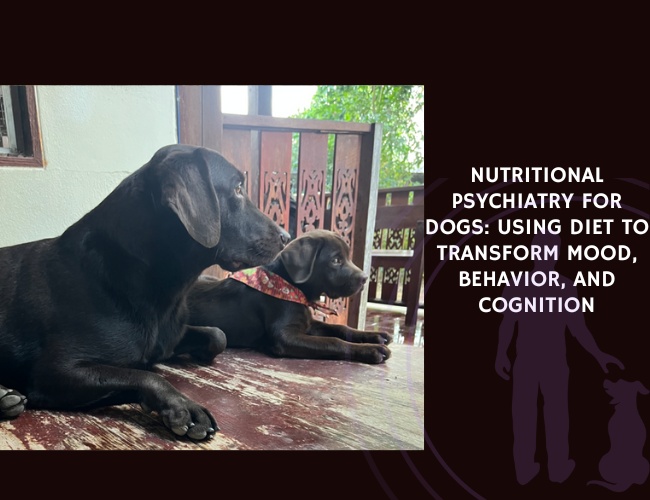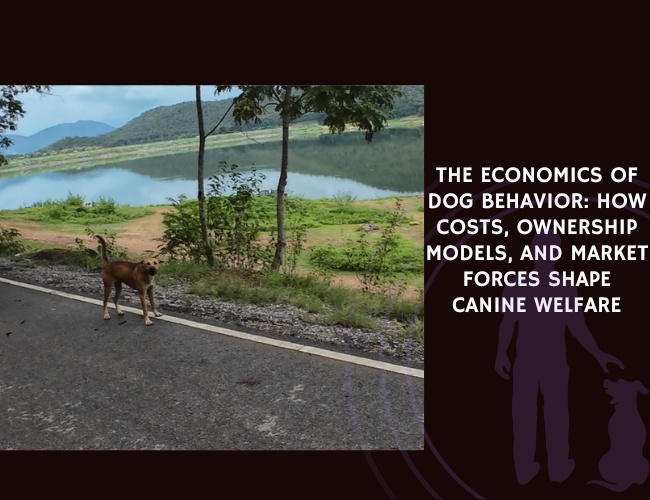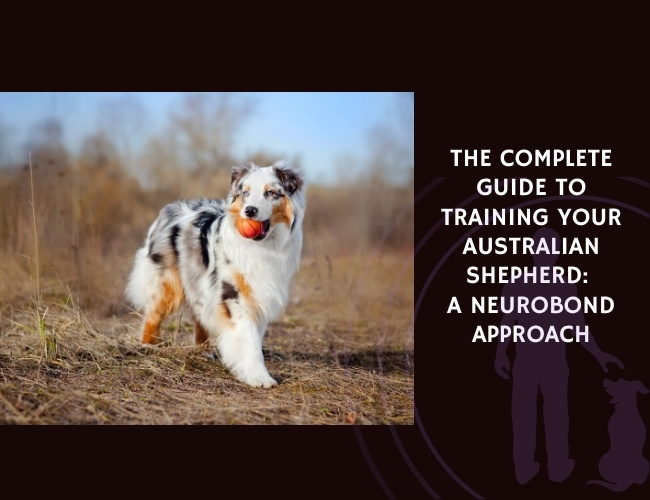Introduction: When the Journey Becomes the Challenge
Picture this: You’re excited about a weekend getaway with your beloved canine companion, but as soon as you start the engine, your dog begins drooling, panting, and looking utterly miserable. You’re not alone in this struggle – motion sickness affects between 20% and 50% of our furry friends, turning what should be joyful adventures into stressful ordeals for both you and your pup.
Car sickness in dogs is more than just an inconvenience; it’s a complex condition that interweaves physiological responses with learned behaviors, creating a cycle that can significantly impact your dog’s quality of life and your bond together. Whether you’re dealing with a young puppy whose vestibular system is still developing or an adult dog who’s developed anxiety around car travel, understanding the mechanisms behind motion sickness is your first step toward helping your four-legged friend become a happy traveler.
Let us guide you through the fascinating science behind why dogs get car sick, the behavioral patterns that emerge, and most importantly, the practical solutions that can transform your anxious traveler into a road trip enthusiast. Did you know that some dogs start feeling nauseated before the car even moves? Or that certain breeds are more susceptible to motion sickness than others? We’ll explore all of this and more, giving you the knowledge and tools to make every journey a tail-wagging success. 🐾
Understanding the Behavioral Landscape of Canine Motion Sickness
Recognizing the Signs: How Your Dog Communicates Distress
Your dog can’t tell you “I’m feeling queasy,” but their body language speaks volumes. Understanding these signals is crucial for early intervention and preventing full-blown car sickness episodes. The clinical manifestations of motion sickness in dogs often begin subtly and escalate as the journey continues.
Early warning signs typically include excessive yawning – not because they’re tired, but as a stress response. You might notice your dog beginning to lick their lips repeatedly or swallowing more than usual. These are your first clues that discomfort is building. As the sensation intensifies, more obvious symptoms emerge: excessive drooling that leaves puddles on your car seat, stress panting (that heavy breathing that has nothing to do with temperature or exertion), and an overall sense of uneasiness where your normally settled pup can’t seem to find a comfortable position.
The anxiety component adds another layer of complexity to motion sickness. Dogs are incredibly perceptive creatures, and those who travel infrequently – perhaps only for annual vet visits – often develop negative associations with car rides. This conditioning effect means that some dogs begin showing signs of distress the moment they see you reaching for the car keys. The anticipation alone can trigger nausea, creating a learned response where vomiting might occur before the vehicle even starts moving.
The Vicious Cycle: When Fear Feeds Physical Symptoms
Here’s where things get particularly challenging: the relationship between anxiety and physical symptoms creates a self-reinforcing cycle that can be difficult to break. Your dog feels anxious about the car, which heightens their sensitivity to motion, which causes nausea, which reinforces their fear of the car. Round and round it goes, with each experience potentially making the next one worse.
Behavioral manifestations of this cycle include whining or vocalizing their distress, trembling or shaking even in warm weather, attempting to hide or resist getting into the car, and in severe cases, having accidents due to stress-induced diarrhea. Some dogs become so overwhelmed that they shut down completely, appearing frozen or extremely subdued – a response that might be mistaken for being “well-behaved” when it’s actually a sign of significant distress.
The impact on your relationship with your dog can be profound. Dogs that suffer from severe motion sickness are often left home during family outings, missing opportunities for socialization, exercise, and bonding experiences. This social isolation doesn’t just affect their physical health; it can lead to behavioral problems at home, increased separation anxiety, and a weakening of the human-animal bond that’s so precious to both of you. 🧡
The Science Behind the Sickness: Neurological and Physiological Mechanisms
Your Dog’s Inner Ear: The Motion Detection System
To truly help your motion-sick pup, it’s essential to understand what’s happening inside their body during car travel. The principal cause of motion sickness lies within the vestibular system – a complex sensory organ in the inner ear that’s responsible for maintaining balance and spatial orientation.
The vestibular apparatus consists of three fluid-filled semicircular canals, each positioned to detect rotation in a different plane of movement. When your car accelerates, brakes, or turns, the fluid in these canals moves, sending signals to your dog’s brain about the body’s position and movement. In dogs prone to motion sickness, this system is either hypersensitive or still developing, leading to an overreaction to normal vehicle movements.
The connection between the inner ear and the vomiting center in the brain stem is direct and powerful. The chemoreceptor trigger zone (CRTZ) acts as a kind of security system, monitoring for potential toxins or unusual stimuli that might indicate poisoning. When it receives conflicting or overwhelming signals from the vestibular system, it triggers the vomiting reflex as a protective measure – even though there’s no actual toxin present.
Sensory Conflict: When the Brain Gets Mixed Messages
The sensory conflict theory provides the most comprehensive explanation for why motion sickness occurs. Your dog’s brain is constantly processing information from multiple sources: their eyes see the stationary interior of the car, their vestibular system feels movement, and their proprioceptors (body position sensors) detect that they’re sitting still. When these inputs don’t match up, the brain interprets this confusion as a potential threat.
The neurochemical cascade that follows this sensory conflict is fascinating. NK1 receptors in the emetic center play a major role, with substance P – a neurotransmitter found in high concentrations in both the chemoreceptor trigger zone and vomiting center – acting as the primary messenger. This explains why certain medications that block these receptors can be so effective in preventing motion sickness.
Other neurotransmitter systems involved include serotonin (5-HT), which regulates mood and nausea; dopamine (D2), affecting both movement perception and nausea; histamine (H1), contributing to the vestibular response; cholinergic (ACh) pathways, involved in both motion detection and nausea; and even mu opioid receptors, which may explain why some dogs seem to experience genuine distress beyond just physical discomfort.
Nutritional Interventions: Supporting Your Dog from the Inside Out
Natural Remedies That Make a Difference
Before reaching for medications, many pet parents find success with nutritional interventions that support their dog’s ability to handle car travel. These natural approaches can be particularly effective when combined with behavioral training, offering a gentler path to comfortable car rides.
Ginger: Nature’s anti-nausea champion has been used for centuries to combat motion sickness in humans, and anecdotal evidence suggests it works wonderfully for our canine companions too. The active compound gingerol not only helps settle upset stomachs but also provides anti-inflammatory benefits that can ease general discomfort. You can offer ginger in various forms – fresh grated ginger mixed with food, ginger treats specifically formulated for dogs, or ginger supplements designed for canine consumption. Start with small amounts (about 1/4 teaspoon for small dogs, up to 3/4 teaspoon for large breeds) given 30-60 minutes before travel.
The gut-brain connection through probiotics represents an exciting frontier in managing travel anxiety. Research has revealed fascinating connections between your dog’s gut microbiome and their nervous system. Quality probiotics don’t just improve digestion; they can actually influence behavior and stress responses. By supporting a healthy gut microbiome, you’re helping your dog’s body better manage the stress that contributes to motion sickness. Look for probiotics with multiple strains of beneficial bacteria and consider starting supplementation at least two weeks before planned travel to allow the microbiome to adjust.
Calming Supplements and Holistic Support
The world of natural calming supplements offers numerous options for supporting your anxious traveler. Bach flower remedies, particularly Rescue Remedy, have helped many dogs find their calm during stressful situations. While scientific evidence is limited, many pet parents swear by these gentle flower essences for taking the edge off travel anxiety.
Amino acid derivatives like L-Theanine (found in products like Anxitane or Solliquin) work by promoting alpha brain waves associated with relaxation without causing drowsiness. Casein protein derivatives (such as those in Zylkene) mimic the calming properties of mother’s milk, providing comfort at a biochemical level. These supplements work best when given regularly rather than just before travel, allowing them to build up in your dog’s system.
Don’t overlook the power of B vitamins and minerals. Vitamin B6, taken before travel, can significantly reduce dizziness and nausea. Magnesium plays a dual role – helping to reduce stomach acidity that can worsen reflux during travel while also supporting overall nervous system function. These nutrients work synergistically with other interventions, creating a comprehensive nutritional support system for your traveling companion. 🧠
Pre-Travel Feeding Strategies
What and when your dog eats before car travel can make a tremendous difference in their comfort level. The golden rule is to withhold food 3-4 hours before travel – an empty stomach is less likely to cause problems than a full one. However, traveling on a completely empty stomach can sometimes worsen nausea in sensitive dogs, so finding the right balance is key.
The ideal pre-travel meal plan might look like this: offer a light meal 4-5 hours before departure, consisting of easily digestible foods like boiled chicken and rice. Avoid fatty or rich foods that take longer to digest. Ensure adequate hydration by offering fresh water up until departure time, but remove the water bowl 30 minutes before leaving to prevent a sloshing stomach. Consider offering a small, bland snack like a plain rice cake 30 minutes before travel for dogs who do better with something in their stomach.

Behavioral Interventions: Training Your Way to Comfortable Travel
The Art of Desensitization: Baby Steps to Big Success
Desensitization is your secret weapon in conquering car sickness, especially when anxiety plays a major role. This systematic approach involves gradually exposing your dog to the car environment in a controlled, positive way, allowing them to build confidence without triggering their fear response.
Starting with a stationary vehicle is crucial – remember, this isn’t a race, and success comes from taking things slowly. Begin by simply sitting in the parked car with your dog for “fun time.” Bring their favorite toys, offer special treats they only get during car training, and keep sessions short and sweet – just 5-10 minutes initially. The goal is to create positive associations with the car environment before any movement is involved.
Once your dog is comfortable in the stationary car (this might take days or weeks), progress to turning on the engine while remaining parked. This introduces the vibration and sound of the running vehicle without movement. Continue with treats and praise, gradually extending the time. When your dog shows no signs of stress with the engine running, you’re ready for the next phase: actual movement, starting with just backing out of the driveway and returning, then progressing to short trips around the block.
Counterconditioning: Changing Emotional Responses
While desensitization reduces sensitivity to the car environment, counterconditioning goes a step further by actively changing your dog’s emotional response from negative to positive. This powerful technique requires consistency and patience but can transform even the most car-phobic pup into an eager traveler.
Creating positive associations involves pairing every aspect of car travel with something your dog loves. Start before you even get to the car – make “going for a ride” announcement exciting with a happy voice and perhaps a special pre-ride ritual like a favorite game. Use high-value treats that your dog only gets during car training – think freeze-dried liver, cheese, or whatever makes your dog’s tail wag enthusiastically.
The key to successful counterconditioning is maintaining a positive emotional state throughout the process. If your dog shows signs of stress, you’ve moved too quickly. Back up to the previous successful step and spend more time there. Practice sessions should happen at least twice weekly, though daily is even better. Sessions can last anywhere from 5 minutes to 45 minutes, depending on your dog’s comfort level and progress.
Crate Training for Car Comfort
For many dogs, being secured in a familiar crate during car travel provides a sense of security that can significantly reduce motion sickness symptoms. However, if your dog isn’t already crate-trained, attempting to introduce both crate and car simultaneously can be overwhelming.
The two-step approach works best: first, establish comfort with the crate in your home environment. Make the crate a positive space with comfortable bedding, favorite toys, and regular treat deliveries. Feed meals in the crate with the door open, gradually working up to closed-door sessions. Only once your dog views their crate as a safe haven should you introduce it to the car environment.
When transitioning the crate to the car, maintain all the positive associations you’ve built. The familiar scent and comfort of their established safe space can provide tremendous emotional support during travel. Some dogs who previously couldn’t tolerate car travel find that being in their crate makes all the difference. 🐾
Medical Management: When Professional Intervention is Needed
Maropitant (Cerenia): The Game-Changer
When behavioral interventions and natural remedies aren’t enough, modern veterinary medicine offers highly effective solutions. Maropitant, marketed as Cerenia, represents a breakthrough in treating canine motion sickness. This medication was specifically developed for dogs and works by blocking NK1 receptors, preventing substance P from triggering the vomiting response.
What makes maropitant special is its targeted action – it prevents nausea and vomiting without causing sedation, allowing your dog to remain alert and engaged during travel. The medication works best when given 2 hours before travel, and its effects can last 24 hours, making it ideal for longer journeys. Many veterinarians consider it the gold standard for motion sickness prevention, with success rates that have transformed the lives of countless car-sick dogs.
The dosing protocol typically involves giving the medication with a small amount of food to prevent stomach upset. Your veterinarian will calculate the appropriate dose based on your dog’s weight. Some dogs may need the medication for every car ride initially, while others can gradually reduce frequency as they build positive associations with travel through concurrent behavioral training.
Antihistamines and Anti-Anxiety Options
Traditional antihistamines offer another pharmacological approach to managing motion sickness. Medications like diphenhydramine (Benadryl), dimenhydrinate (Dramamine), and meclizine work through multiple mechanisms – preventing motion sickness, providing mild sedation, and reducing drooling.
The sedation factor can be either beneficial or problematic, depending on your goals. For highly anxious dogs, the calming effect can be helpful, but for dogs you want to engage with at your destination, the drowsiness might be undesirable. It’s important to test any antihistamine at home before travel to understand how your dog responds.
For dogs where anxiety is the primary driver of car sickness, anti-anxiety medications might be more appropriate. Trazodone, acepromazine, and alprazolam each work differently and have varying onset times and durations. The goal with these medications is typically to relieve anxiety rather than to sedate completely – your dog should be calm but still able to function normally.
Finding the Right Medical Approach
Working with your veterinarian to find the optimal medical management strategy often involves some trial and error. Factors to consider include the length of your typical car rides, how frequently you travel, your dog’s other health conditions, and whether anxiety or physical motion sickness is the primary problem.
Some dogs do best with a combination approach – perhaps maropitant for the anti-nausea effect plus a mild anti-anxiety medication for emotional support. Others might need medication only for longer trips while managing shorter journeys with behavioral techniques alone. Your vet might recommend starting with one medication and adjusting based on response, or trying different options for different types of travel.
Regular monitoring and adjustment ensure the treatment plan continues to meet your dog’s needs. As behavioral training progresses and positive associations build, many dogs can reduce or even eliminate their need for medication over time. The goal is always to use the minimum intervention necessary for comfortable travel. 😄
Uneasy. Cyclical. Manageable.
Sickness speaks in signals. Yawning, lip licking, and drooling aren’t random quirks but early cries for help when motion overwhelms your dog’s senses. Recognizing these cues allows you to intervene before distress escalates.
Anxiety fuels the cycle. Negative associations with travel—like vet visits—prime dogs to feel sick before the engine even starts. Fear heightens sensitivity to motion, and nausea deepens the fear, locking them in a loop.



Relief requires strategy. Breaking the cycle means pairing car rides with positive experiences, using gradual exposure, and supporting their physiology. With patience, even anxious travelers can learn to ride with comfort.
Age, Breed, and Developmental Considerations
Puppyhood: When Growing Up Solves the Problem
If you’re dealing with a car-sick puppy, there’s good news: many young dogs naturally outgrow motion sickness as their vestibular system matures. The inner ear structures responsible for balance and motion detection aren’t fully developed in young puppies, making them more susceptible to motion sickness during their first few months of life.
The developmental timeline varies by individual and breed size. Small breeds might see improvement by 5-6 months of age, while larger breeds can take longer to reach full vestibular maturity. This doesn’t mean you should simply wait it out, though. Early positive experiences with car travel, even if your puppy experiences some motion sickness, help prevent the development of learned anxiety that can persist even after the physical symptoms resolve.
The critical early weeks of a puppy’s life play a fascinating role in vestibular development. Puppies who engage in plenty of rolling play with littermates, get handled in various positions, and experience gentle movement stimulation tend to develop more robust vestibular systems. If you’re raising a young puppy, incorporating gentle movement experiences into their daily routine – like holding them in different positions during cuddle time or encouraging tumbling play – can support healthy vestibular development.
Breed-Specific Susceptibilities
While any dog can experience motion sickness, certain breeds show higher susceptibility rates. Brachycephalic breeds like French Bulldogs and English Bulldogs face unique challenges due to their compressed airways and tendency toward breathing difficulties, which can exacerbate nausea during travel. Their shortened muzzles also affect their ability to cool themselves through panting, potentially increasing discomfort during car rides.
Herding breeds such as German Shepherds, Border Collies, and Australian Shepherds often display heightened sensitivity to environmental stimuli, including motion. Their alert, reactive nature that makes them excellent working dogs can also make them more prone to developing anxiety around car travel. These breeds often benefit from additional mental stimulation during rides, such as puzzle toys or calming music designed for dogs.
Smaller breeds like Cavalier King Charles Spaniels and Dachshunds may be more susceptible due to their size relative to vehicle movement – they experience proportionally greater motion effects than larger dogs. Additionally, their position in the car (often on laps or in carriers) may expose them to more movement than dogs who can brace themselves on the floor.
Senior Dogs: New Challenges with Age
While we often think of car sickness as a puppy problem, senior dogs can develop motion sickness even if they traveled well in their younger years. Age-related changes in the vestibular system, decreased muscle tone affecting their ability to balance, and conditions like canine cognitive dysfunction can all contribute to new-onset travel troubles.
Vision changes common in older dogs can exacerbate sensory conflicts during car travel. A dog with cataracts or other vision impairments may struggle more with the visual-vestibular mismatch that contributes to motion sickness. Joint pain from arthritis can make it difficult for senior dogs to maintain stable positioning during car rides, increasing their discomfort and potentially triggering nausea.
Addressing motion sickness in senior dogs requires a particularly gentle approach. Medication interactions with other prescriptions must be carefully considered, and physical accommodations like orthopedic car beds or ramps for easier entry and exit become important. The good news is that senior dogs often respond well to a combination of environmental modifications and appropriate medical support. 🧡
Creating the Optimal Travel Environment
Vehicle Setup for Success
The way you set up your car’s interior can significantly impact your dog’s comfort during travel. Proper positioning is crucial – dogs generally do better when they can see out the window, as this helps their visual system align with the motion they’re feeling. However, they need to be secured safely to minimize excessive movement that can worsen nausea.
Consider investing in a quality dog car harness that attaches to the seatbelt system, allowing your dog to sit or lie down comfortably while preventing them from being thrown around during turns or stops. For smaller dogs, an elevated car seat that allows them to see out while being securely contained can work wonders. The key is finding the balance between security and comfort that works for your individual dog.
Temperature and air circulation play vital roles in preventing motion sickness. Keep the car cool – warm, stuffy conditions worsen nausea. Crack a window slightly to allow fresh air circulation, but not enough for your dog to stick their head out (which is dangerous and can actually increase motion sickness in some dogs). Some dogs benefit from having air conditioning vents directed toward them, providing both cooling and white noise that can be calming.
Sensory Modifications for Comfort
Managing the sensory environment inside your vehicle can dramatically improve your dog’s travel experience. Visual considerations include using window shades to reduce rapid light changes that can trigger nausea while still allowing your dog to see outside. Some dogs do better with a partial view rather than watching the world rush by at high speed.
Auditory environment matters more than many people realize. Sudden loud noises from the radio, honking horns, or even conversation can startle an already anxious dog. Consider playing calming music specifically designed for dogs – research has shown that certain frequencies and rhythms can reduce stress in our canine companions. Keep the volume low and consistent, avoiding sudden changes that might increase anxiety.
The use of pheromone products can create an invisible comfort zone for your traveling dog. Adaptil (Dog Appeasing Pheromone) sprays or diffusers mimic the calming pheromones mother dogs produce, providing a sense of security. Spray the product in the car 15 minutes before travel, allowing it to disperse before your dog enters. Some pet parents find that combining pheromones with familiar scents from home – like a beloved blanket – creates an even more comforting environment.
Practical Travel Tips for Every Journey
Route planning might seem irrelevant to your dog’s comfort, but it can make a significant difference. Choose routes with fewer stops and starts when possible – highway driving with steady speeds is generally easier on motion-sick dogs than stop-and-go city traffic. Plan for regular breaks every 30-60 minutes on longer trips, allowing your dog to stretch, relieve themselves, and reset their sensory system.
Timing your travels strategically can also help. Many dogs do better with early morning travel when they’re naturally calmer and temperatures are cooler. Avoid traveling immediately after exercise when your dog might be overheated or overexcited. Similarly, traveling during your dog’s normal nap time can encourage them to sleep through at least part of the journey.
Never underestimate the power of consistency. Dogs thrive on routine, and establishing a pre-travel ritual can help signal that car time is coming, allowing them to mentally prepare. This might include a specific command (“let’s go for a ride!”), a special collar or harness used only for car travel, or a particular sequence of events that always precedes getting in the car. 🐾

Long-Term Management Strategies
Building a Comprehensive Treatment Plan
Successfully managing your dog’s car sickness rarely involves just one approach. The most effective strategies combine behavioral training, environmental modifications, nutritional support, and when necessary, medical intervention. Creating your personalized plan starts with honestly assessing your dog’s specific triggers and symptoms.
Keep a travel diary documenting each car ride: note the duration, time of day, weather conditions, your dog’s behavior before, during, and after travel, and any interventions you tried. Patterns will emerge that help you identify what works and what doesn’t. Maybe your dog does better on cooler days, or perhaps morning rides are more successful than afternoon trips. This information becomes invaluable in tailoring your approach.
Setting realistic goals is crucial for long-term success. If your dog currently can’t tolerate a 5-minute ride, aiming for a 2-hour road trip next month isn’t realistic. Instead, celebrate small victories – maybe this week your dog got in the car without trembling, or managed a trip around the block without drooling. Each positive experience builds upon the last, creating momentum toward your ultimate goal of comfortable travel.
The Role of Professional Support
Don’t hesitate to seek professional help if you’re struggling to make progress. Certified dog trainers specializing in behavior modification can provide personalized desensitization and counterconditioning programs tailored to your dog’s specific needs. They can also identify subtle signs of stress you might be missing and help you refine your timing and technique.
Veterinary behaviorists – veterinarians with specialized training in animal behavior – can be particularly helpful for complex cases where anxiety and motion sickness are deeply intertwined. They can prescribe and monitor medication regimens while simultaneously implementing behavior modification protocols, providing a comprehensive medical and behavioral approach.
Regular check-ins with your primary veterinarian ensure that any underlying health issues aren’t contributing to your dog’s travel troubles. Ear infections, for example, can exacerbate vestibular sensitivity, while gastrointestinal issues might lower your dog’s threshold for nausea. Keeping your dog in optimal health supports their ability to handle the challenges of car travel.
Celebrating Progress and Maintaining Gains
As your dog becomes more comfortable with car travel, it’s important to maintain the positive associations you’ve worked so hard to build. Avoiding setbacks means continuing to make car rides positive experiences even after the problem seems resolved. This might mean always having special car treats on hand, maintaining comfortable temperature conditions, or continuing to use calming supplements preventively.
Be prepared for occasional regression – it’s a normal part of the process. A particularly rough car ride (maybe you hit unexpected traffic or had to brake suddenly) might temporarily set back progress. Don’t panic. Return to an earlier step in your training program where your dog was successful, rebuild confidence, and gradually work back up. The second time through is usually much faster than the first.
Success stories from other pet parents can provide both inspiration and practical tips. Many dogs who once couldn’t tolerate a trip to the corner store now happily accompany their families on cross-country adventures. The transformation might take weeks, months, or even longer, but with patience, consistency, and the right combination of interventions, most dogs can learn to tolerate or even enjoy car travel. 😄
Welfare Implications: Why This Matters
The Hidden Cost of Car Sickness
The impact of motion sickness extends far beyond the immediate discomfort of car rides. Dogs who can’t travel comfortably often miss out on enriching experiences that contribute to their overall quality of life. Social opportunities like playdates at the dog park, hiking adventures, beach trips, or visits to friends and family become impossible when car travel is traumatic.
This isolation affects not just the dog but the entire family dynamic. Pet parents report feeling guilty about leaving their dog behind, limiting their own activities to accommodate their pet’s travel troubles. Some families even make major life decisions – like forgoing vacations or declining social invitations – based on their dog’s inability to travel. The strain this places on the human-animal bond cannot be overstated.
Medical care can also be compromised when dogs can’t travel comfortably. Routine veterinary visits become ordeals that pet parents might postpone, potentially missing important preventive care. Emergency situations become even more stressful when you’re trying to manage a nauseated, panicking dog while racing to the emergency clinic. Some pet parents report avoiding necessary specialty consultations or advanced treatments simply because they require longer car rides.
The Psychological Impact on Your Dog
Beyond the physical discomfort, chronic car sickness can have lasting psychological effects on your dog. Learned helplessness – a psychological condition where individuals stop trying to change their situation even when opportunities arise – can develop in dogs who repeatedly experience unsuccessful car rides. These dogs may become generally more anxious, less confident, and less willing to try new experiences.
The stress of anticipating car travel can affect your dog’s behavior in other areas of life. Some dogs develop anxiety around any activities that might precede car rides – like putting on a harness or walking toward the garage. This generalized anxiety can impact their overall emotional well-being and quality of life, creating ripple effects throughout their daily routine.
However, there’s a flip side to this coin: successfully overcoming car sickness can boost your dog’s overall confidence. Dogs who learn to manage their travel anxiety often show improvements in other areas of their life. The coping skills they develop through desensitization and counterconditioning can help them handle other stressful situations more effectively.
Prevention Strategies for Future Dogs
Starting Right with Your Next Puppy
If you’re planning to add a new puppy to your family, you have a golden opportunity to prevent car sickness from ever becoming a problem. Early exposure during the critical socialization period (roughly 3-14 weeks of age) can set the foundation for a lifetime of comfortable travel.
Start with very brief, positive car experiences as soon as your puppy comes home. Even before they’re fully vaccinated and can’t go to public places, they can still experience car rides. Drive to a parking lot and sit in the car with treats and toys, or take short drives around the neighborhood. The key is making these early experiences overwhelmingly positive before any negative associations can form.
Breeder practices matter too. Puppies from breeders who provide early neurological stimulation and varied movement experiences often have more robust vestibular systems. If you’re choosing a breeder, ask about their early puppy development protocols. Do the puppies experience different surfaces, gentle handling in various positions, and age-appropriate challenges that stimulate vestibular development?
Creating a Car-Positive Culture
Make car rides a regular, unremarkable part of your dog’s life from the beginning. Destination diversity is crucial – if the car only goes to the vet, negative associations are almost inevitable. Instead, use the car for trips to fun places: the park, a friend’s house, the pet store for a special treat, or just a scenic drive with a puppuccino at the end.
Keep a “car kit” stocked with special items that make travel comfortable and enjoyable. This might include favorite toys that only come out during car rides, special treats, a comfortable blanket, cleanup supplies just in case, and anything else that helps create positive associations. The investment in creating these positive experiences early pays dividends throughout your dog’s life.
Conclusion: Your Journey to Successful Travel Starts Now
Car sickness in dogs is a complex challenge that touches on physiology, psychology, and the deep bond between humans and their canine companions. Whether you’re dealing with a young puppy whose vestibular system is still developing, an adult dog who’s developed travel anxiety, or a senior facing new challenges, remember that progress is possible.
The path to comfortable car travel rarely follows a straight line. There will be good days and setbacks, breakthrough moments and frustrating plateaus. What matters is your commitment to helping your furry friend overcome this challenge. Every small step forward – from sitting calmly in a parked car to enjoying a cross-country adventure – is worth celebrating.
Your dog’s car sickness affects more than just travel; it impacts your shared quality of life, the adventures you can have together, and the memories you can create. By understanding the science behind motion sickness, implementing appropriate behavioral interventions, utilizing nutritional and medical support when needed, and maintaining patience throughout the process, you’re not just solving a travel problem – you’re opening up a world of possibilities for you and your four-legged friend.
Is your dog ready to transform from a anxious traveler to a happy road trip companion? The journey might be challenging, but with the knowledge you now have, the right support team, and a commitment to gradual progress, your car-sick pup can learn to love the open road. Remember, every dog is unique, and what works for one might not work for another. Be patient with your dog and yourself as you navigate this journey together.
The stories of countless dogs who’ve overcome severe motion sickness to become enthusiastic travelers prove that change is possible. Your dog’s story could be the next success story, inspiring other pet parents facing the same challenge. So take that first small step today – whether it’s sitting in a parked car with treats, scheduling a consultation with your veterinarian, or simply committing to a positive, patient approach. Your future adventures together are waiting, and the road ahead is full of tail-wagging possibilities. 🐾🧡
Next Steps: Your Action Plan
Ready to start helping your furry friend become a confident traveler? Begin with an honest assessment of where you are now, choose one or two interventions to start with, and remember that consistency and patience are your best friends on this journey. Whether you’re preventing car sickness in a new puppy or helping an older dog overcome established fears, every positive experience is a step toward the freedom and joy that comes with comfortable car travel. The open road awaits – let’s help your dog enjoy the ride!

